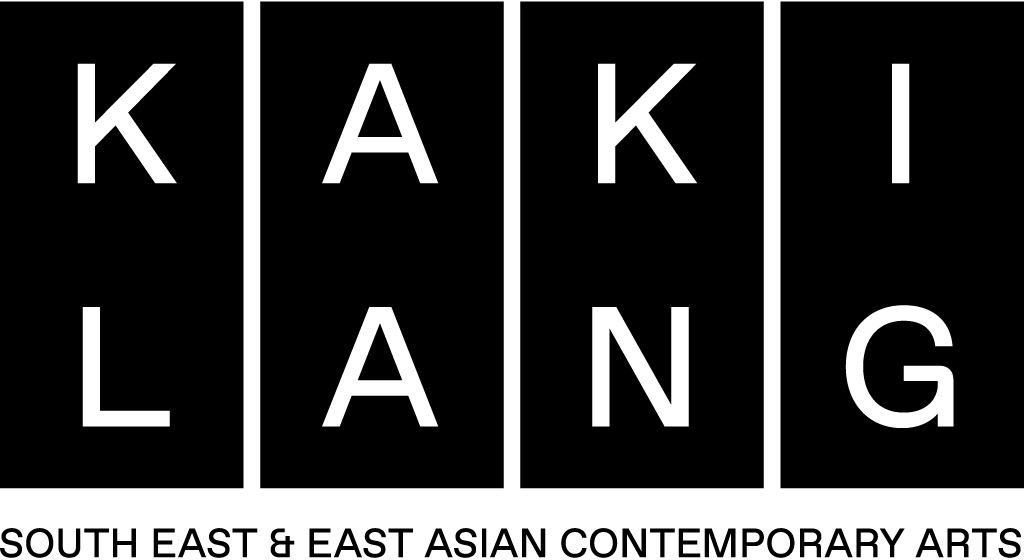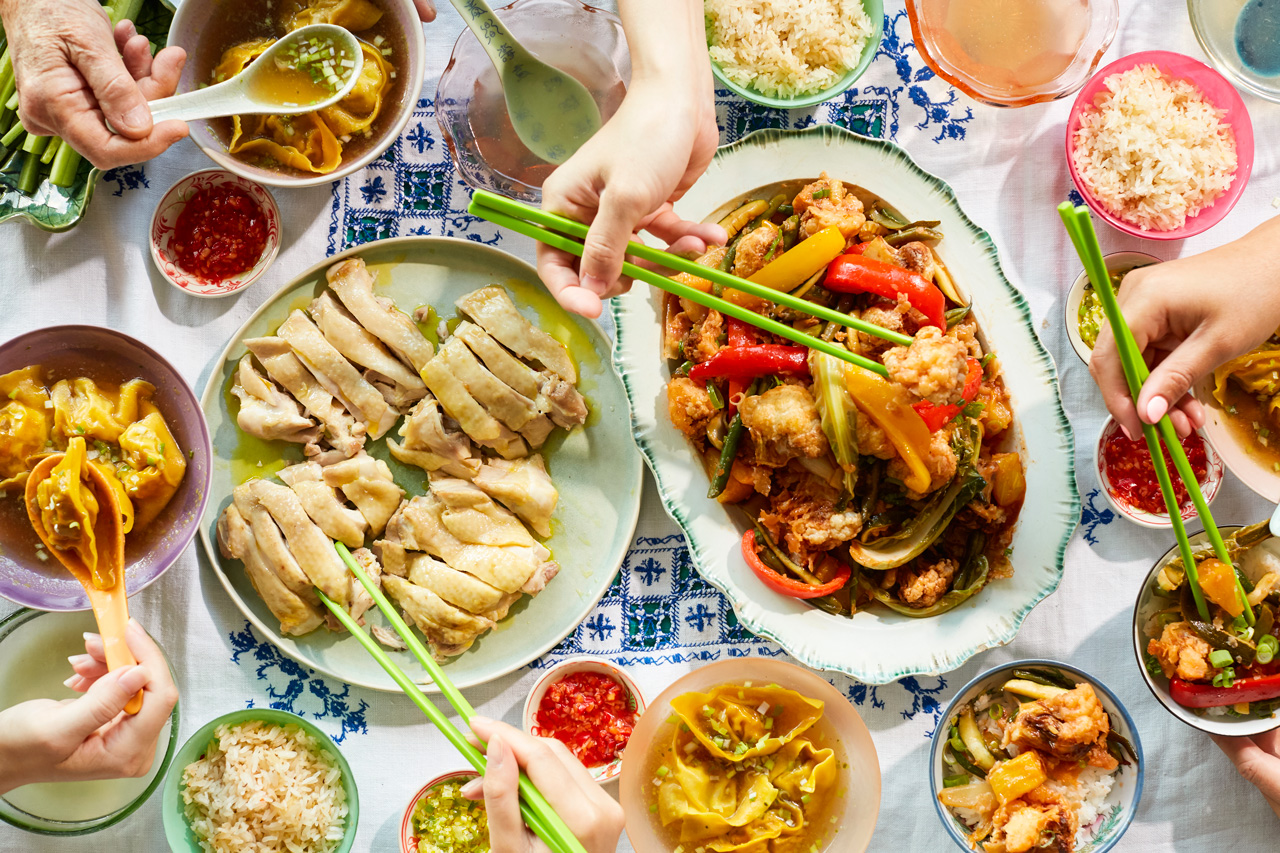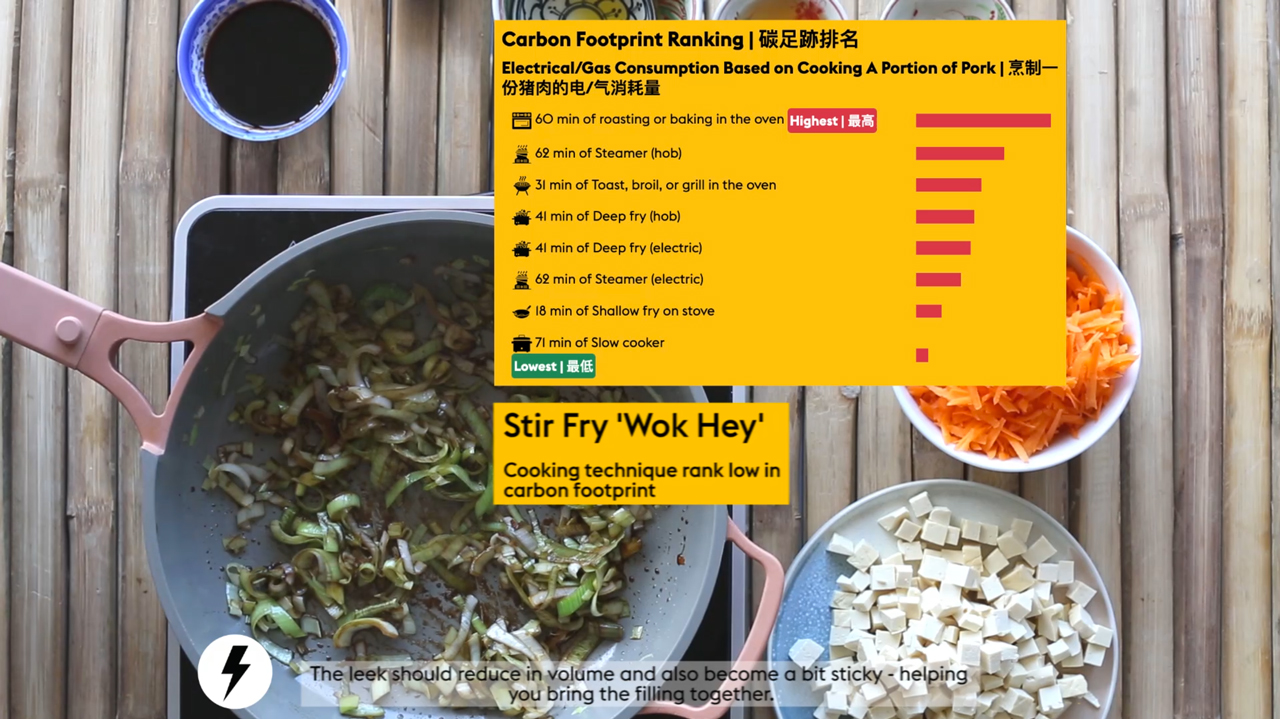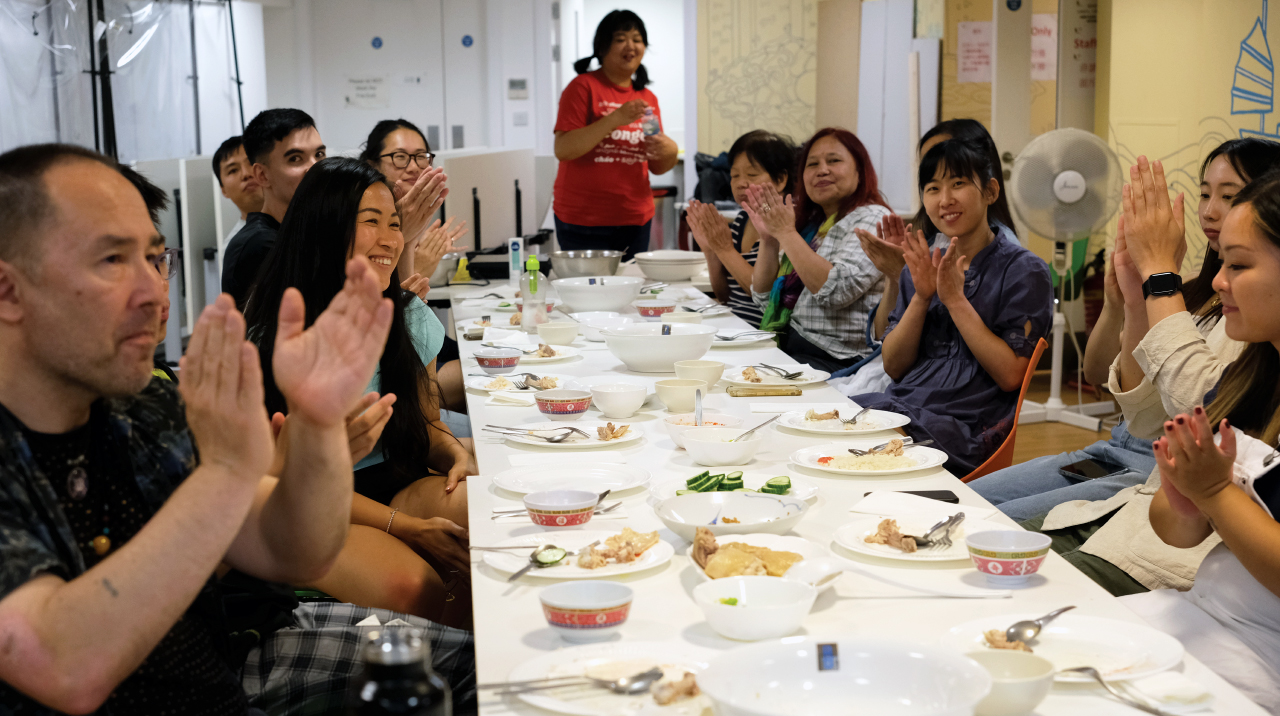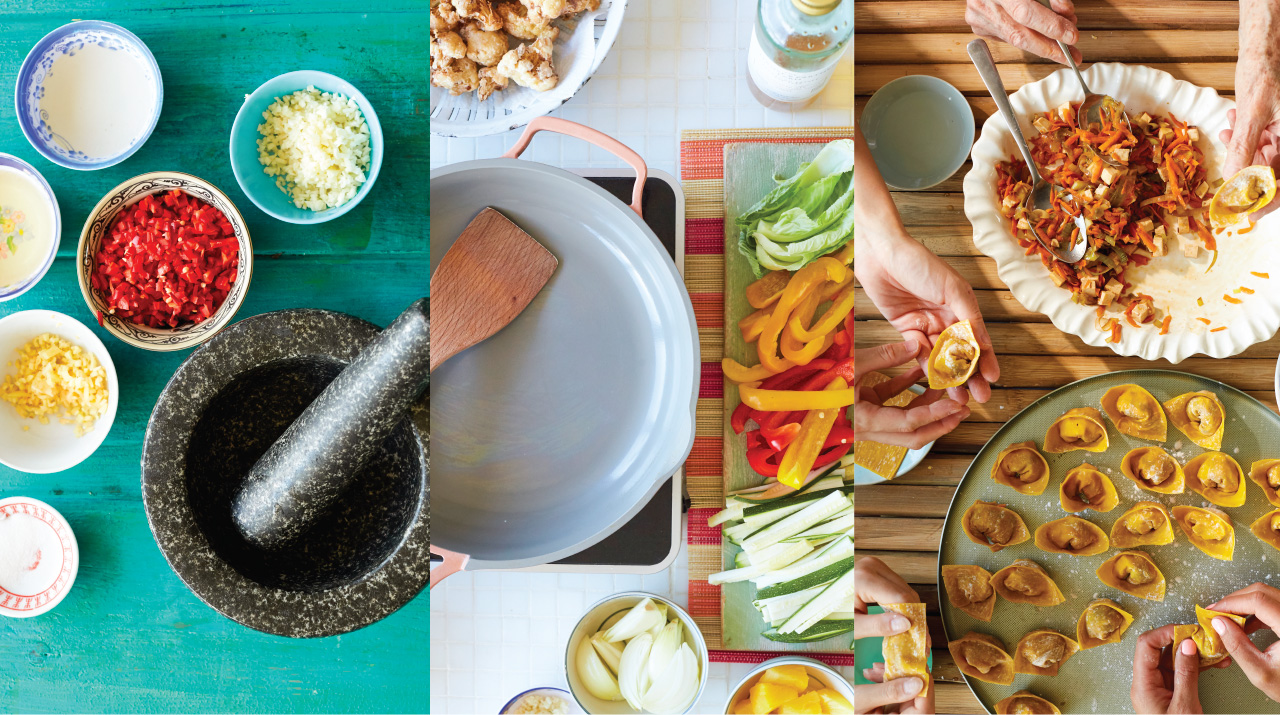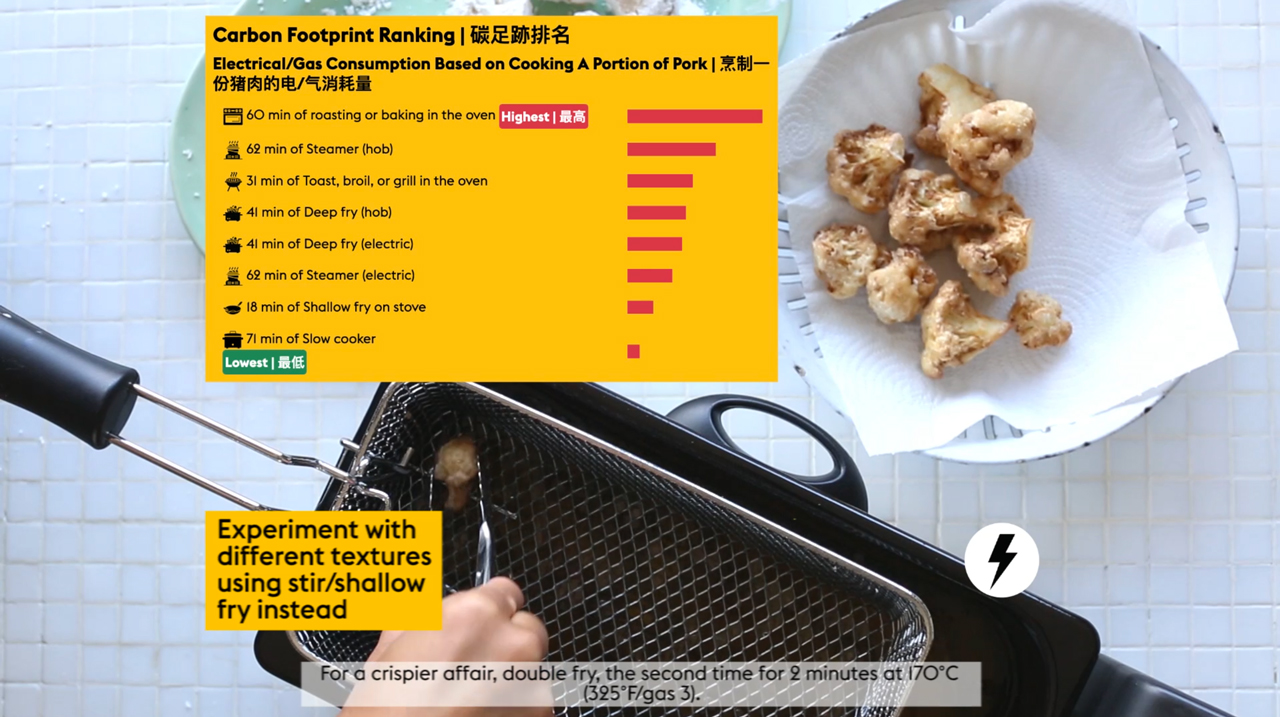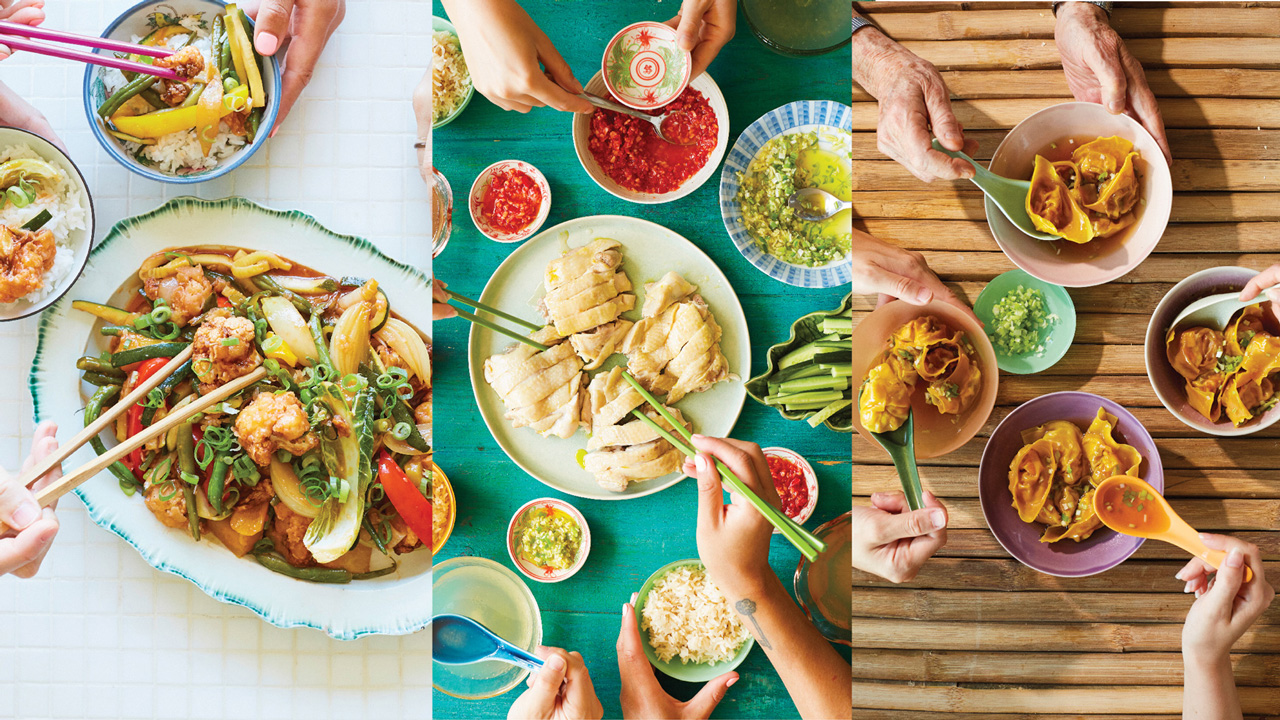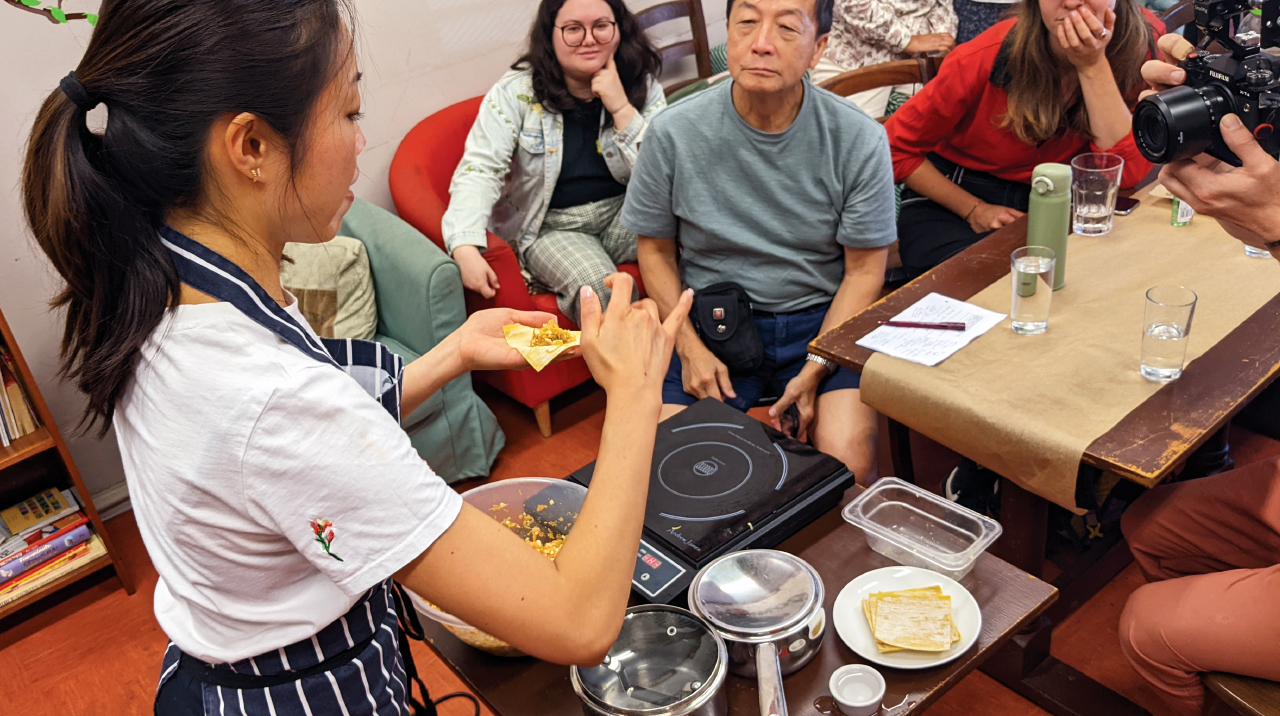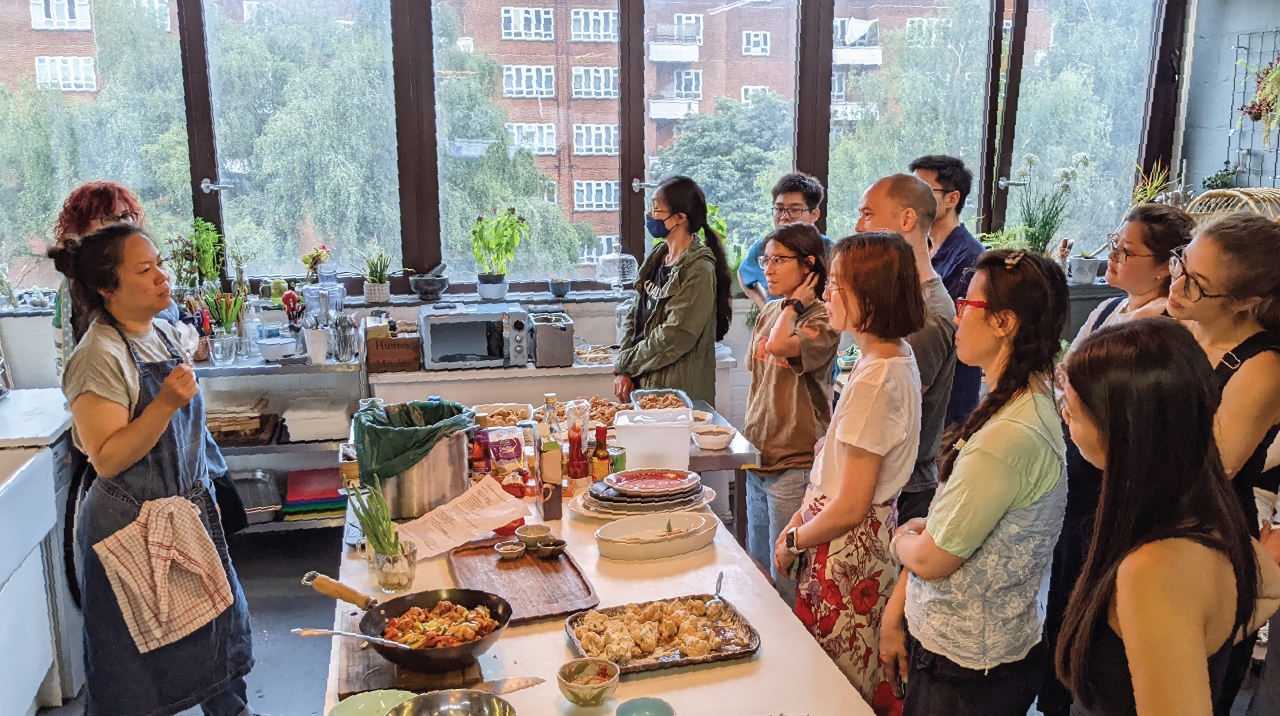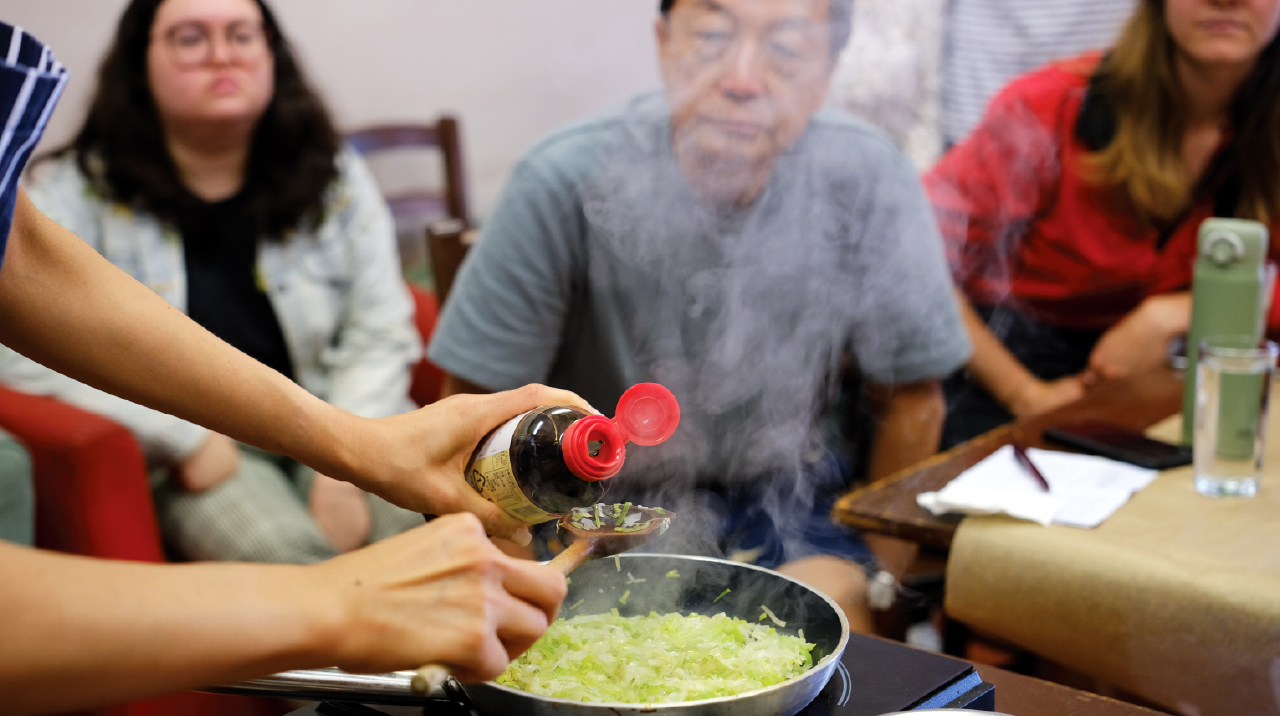
Low Carbon Chinatown | 低碳唐人街
Low Carbon Chinatown is an award winning environmental initiative by designer and artist Ling Tan that combines food, data science and community participation to explore different ways that we can all help respond to the Climate Crisis.
Working with East and South East Asian (ESEA) communities around London, Low Carbon Chinatown engaged participants through fundamentally enjoyable activities: cooking and eating. Food, with its association to culture, is something we all have in common, breaking down barriers and bringing us all together. In the project, participants worked with notable ESEA chefs to create low carbon alternatives to typical Chinese dishes, exploring different ingredients, cooking techniques and food sources that, in combination, still retained a core essence of Chinese food culture. By presenting these dishes back to the wider public in a pop-up structure built using low carbon materials and processes, we showed how reimagining both food and design can contribute to a more sustainable future.
Click on the different buttons below to learn more about the project and see how you can reduce your own carbon footprint through delicious low carbon recipes!
Low Carbon Food & Climate Workshops
Kicking off in London as our first stop, in this iteration, a group of almost sixty London based East & South-East Asian participants came together over the summer in a series of engagement workshops to experiment with cooking Chinese dishes while reducing its carbon footprint. They collectively develop a set of low carbon (footprint) Chinese food recipes, based on traditional Chinese cuisines that are popular in the UK, with the help of a data scientist Raphael Leung and acclaimed food writers Mimi Aye, Uyen Luu and Shu Han Lee. Visit our Low Carbon Digital Cookbook to learn about the various low carbon dishes that were developed in the participatory process.
Making A Low Carbon Hainanese Chicken Rice
MiMi Aye x Chinatown
How do we cook our favourite dishes using a lower carbon footprint approach? UK-based Burmese Chef and Food Writer MiMi Aye explored cooking low carbon Chicken Rice with a group of participants living in central London, focusing on reducing the carbon footprint using cooking techniques. The result is a low carbon version of the dish – with chicken still included!

Supported by London Chinese Community Centre.
Making A Low Carbon Sweet and Sour 'Pork'
Uyen Luu x Hackney
UK-based Vietnamese food writer and photographer Uyen Luu worked with a group of participants living in and around Hackney to develop a low carbon (footprint) version of a classic and popular sweet and sour pork dish with a reduced carbon footprint through buying and growing locally grown produce. No one misses pork once they taste this!
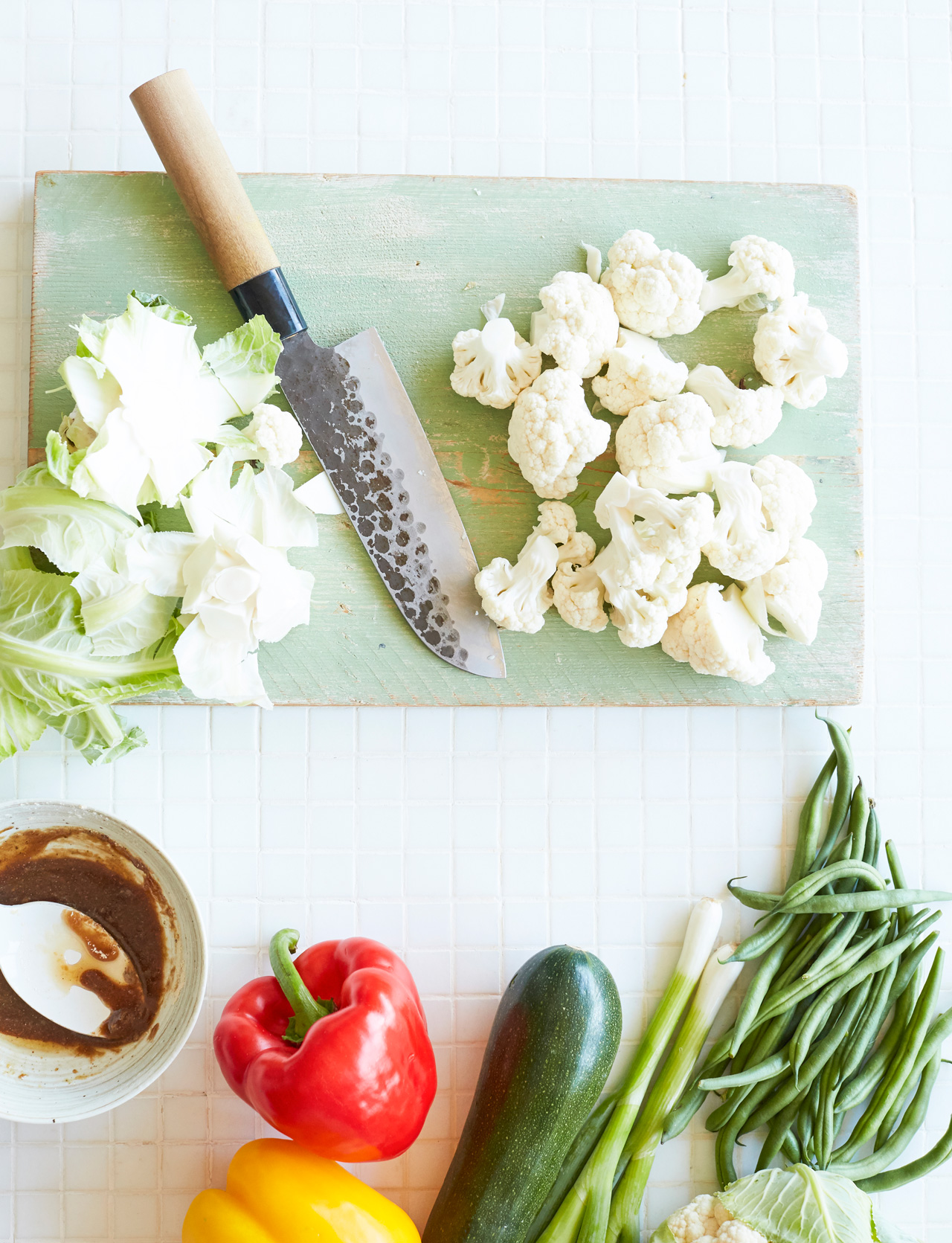
Supported by Hackney Chinese Community Centre.
Making A Low Carbon Wonton Dumpling Soup
Shu Han Lee x Newham
Who doesn't love dumplings? Traditional wonton dumpling uses pork and prawn in the fillings. In this version, UK-based Singaporean food writer Shu Han Lee worked with a group of participants from Newham to develop a low carbon (footprint) of the wonton dumpling soup with vegetarian fillings that taste like meat and wrappings that are made in London.
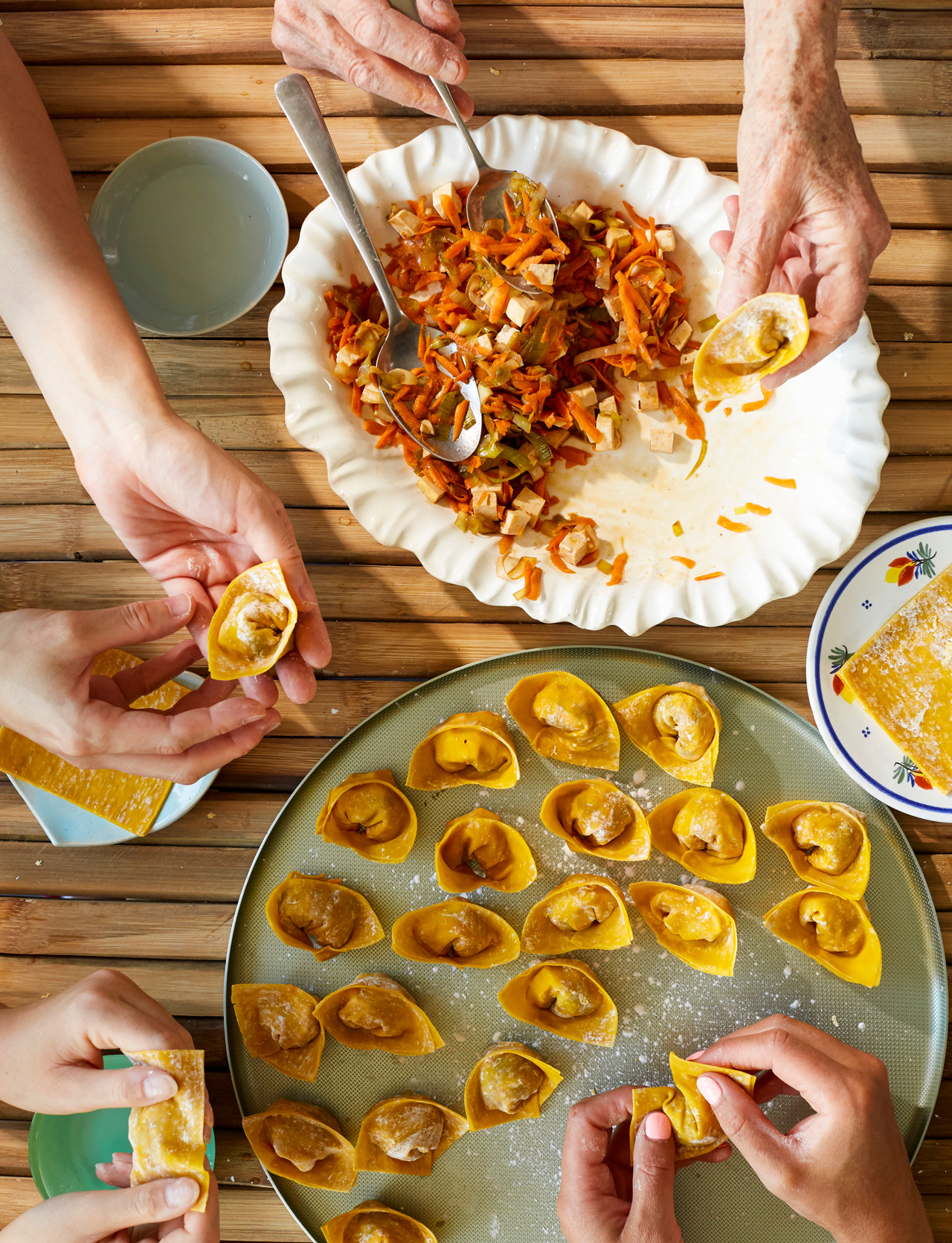
Supported by Newham Chinese Association and Royal Docks.
– Food photography by Uyen Luu and styling by Sam Dixon –
Low Carbon Pop-Up Structure
As part of Low Carbon Chinatown, a Pop-Up Structure built from low carbon materials and processes is installed in Chinatown, used to host a series of sit-down tastings featuring low carbon dishes chosen and developed by London’s East and South East Asian communities alongside a data scientist and acclaimed Asian food writers. The Pop-Up is featured as part of London Design Festival.
The low carbon Pop-Up Structure is designed by Ling Tan and designer Usman Haque, both trained as architects, supported by structural engineers Atelier One, fabricated by Gary Campbell and production managed by Nick Murray.
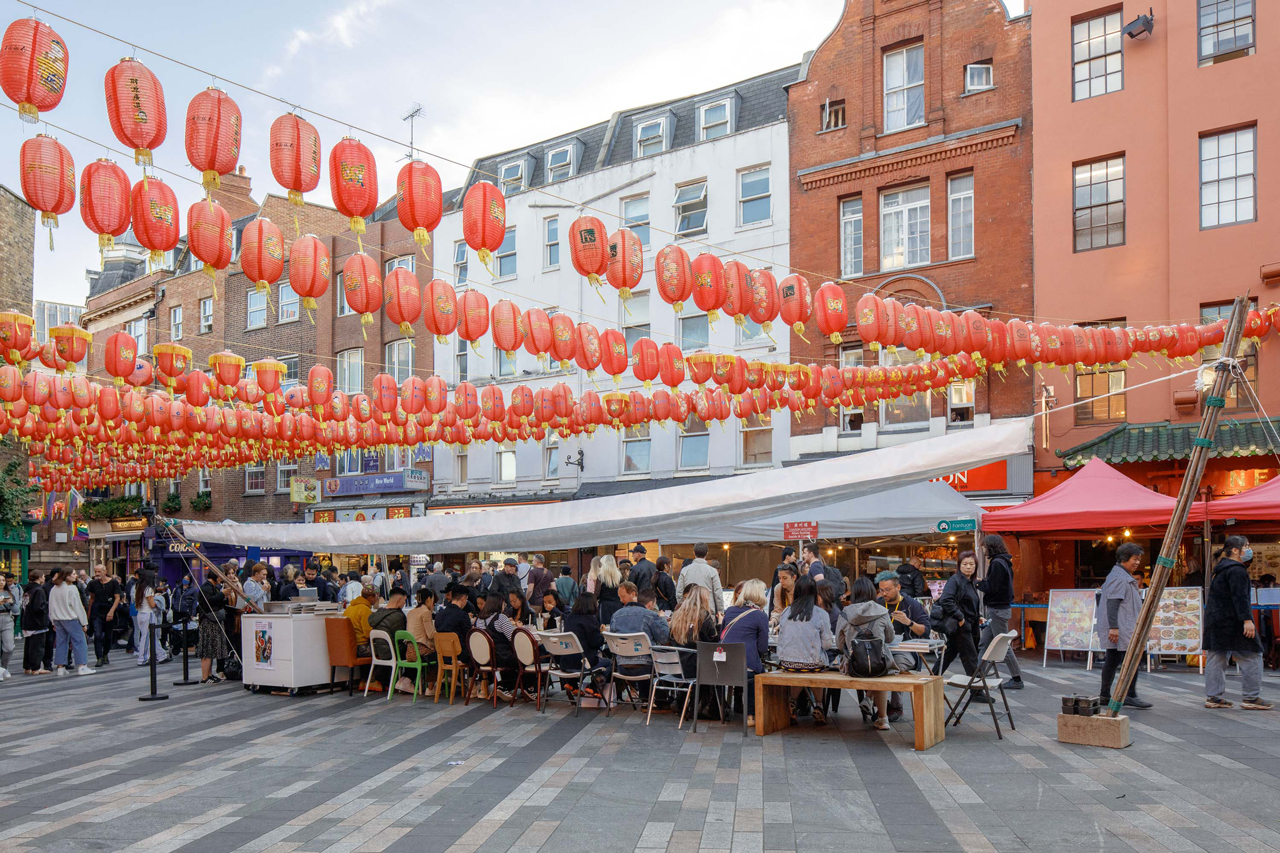
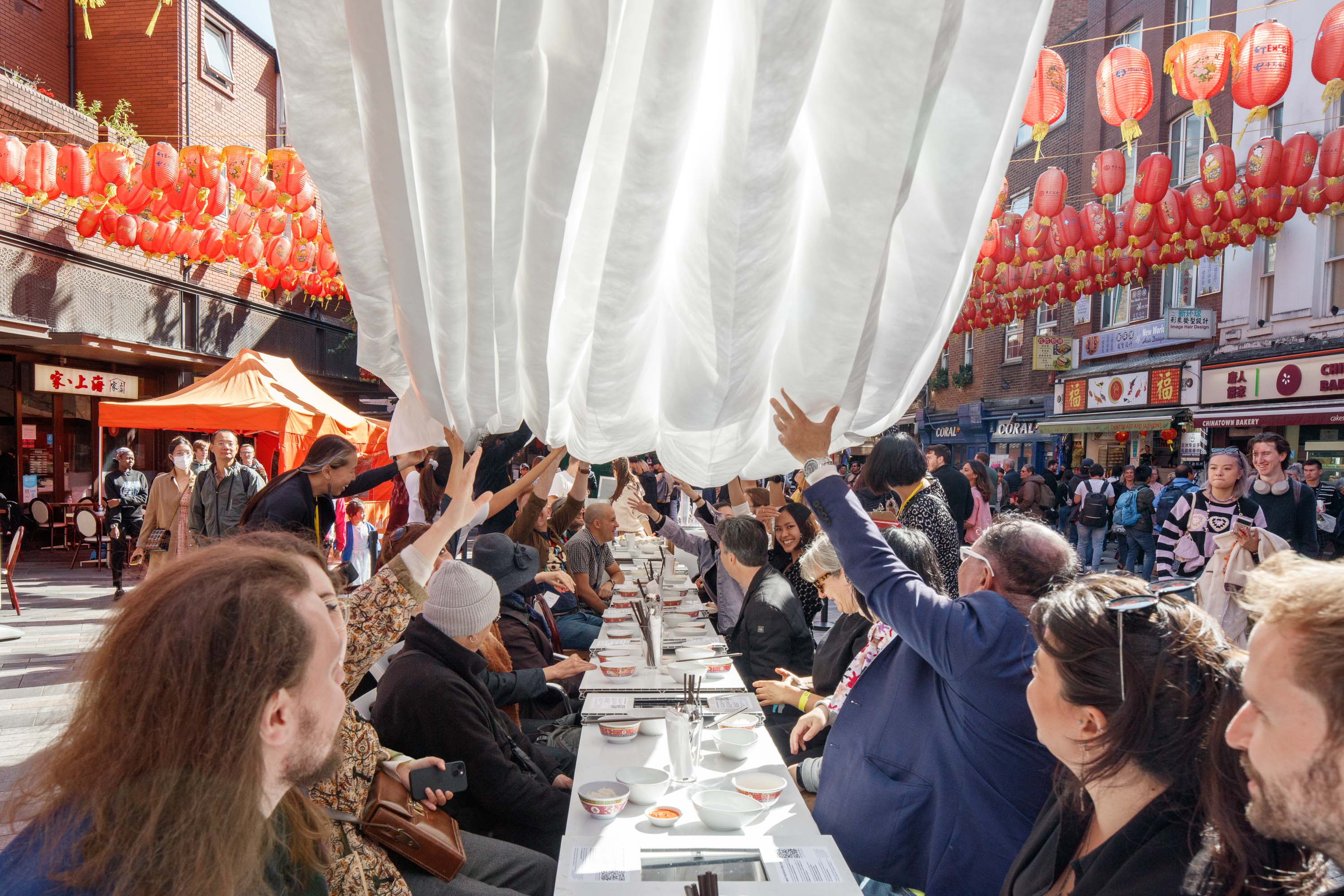
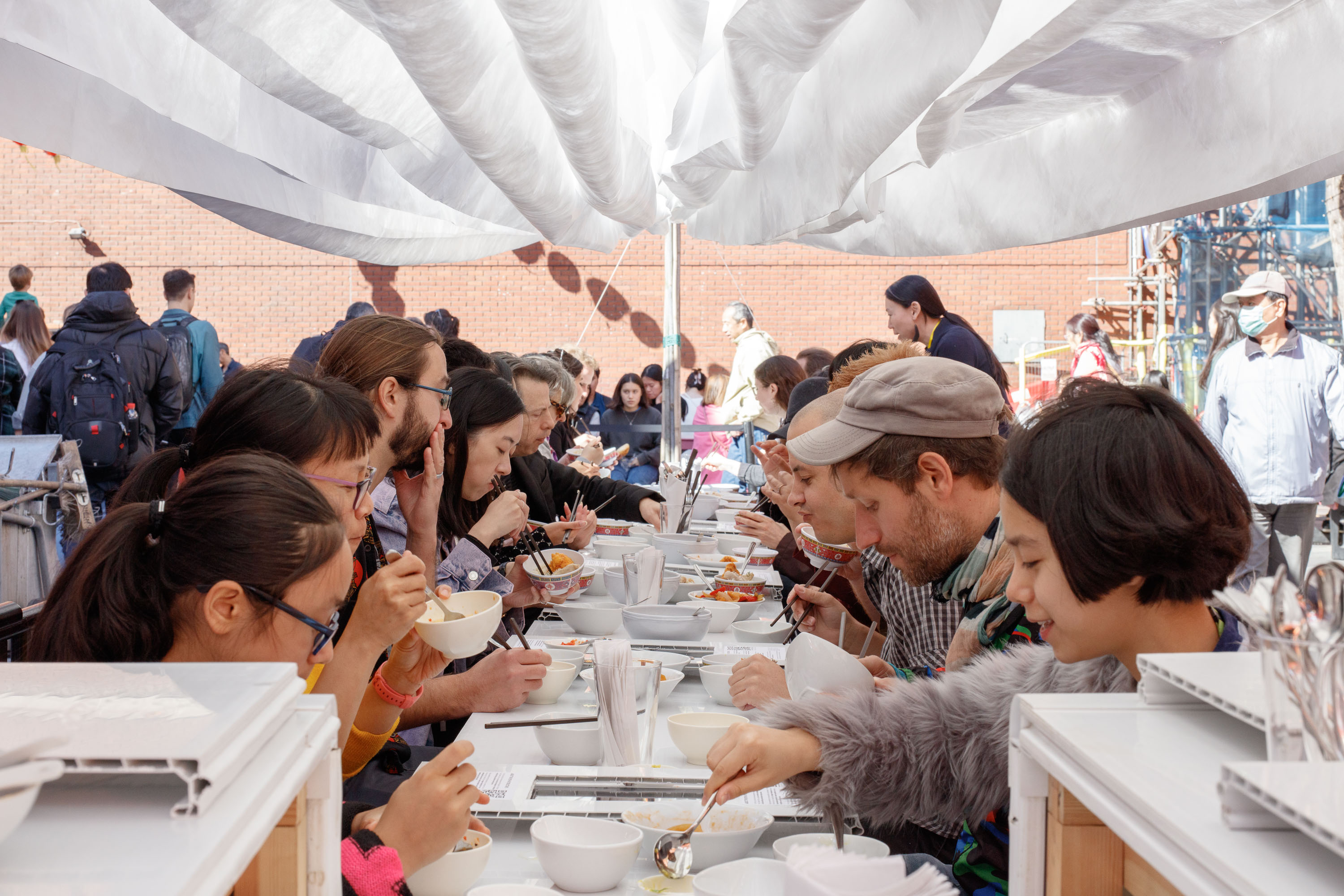
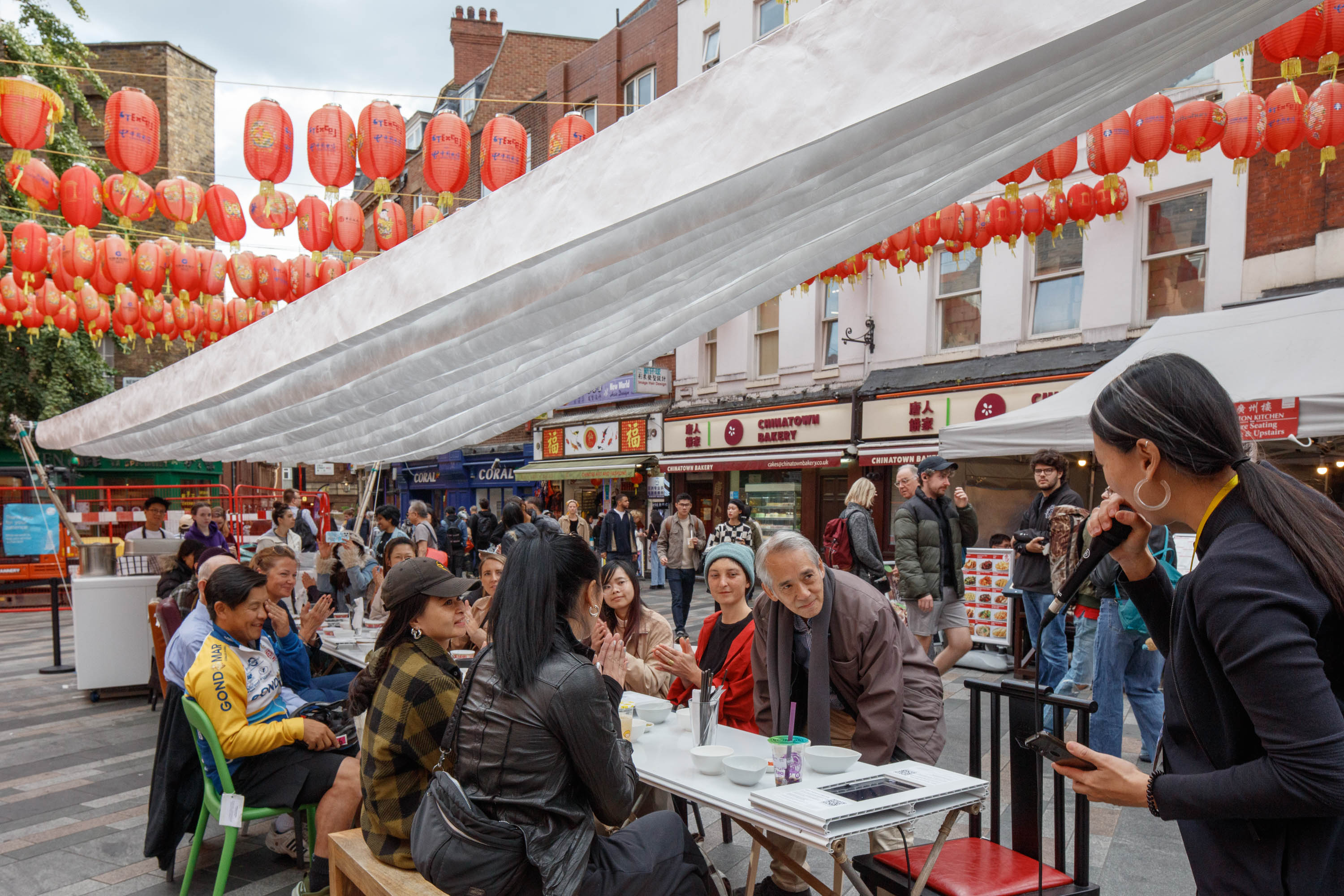
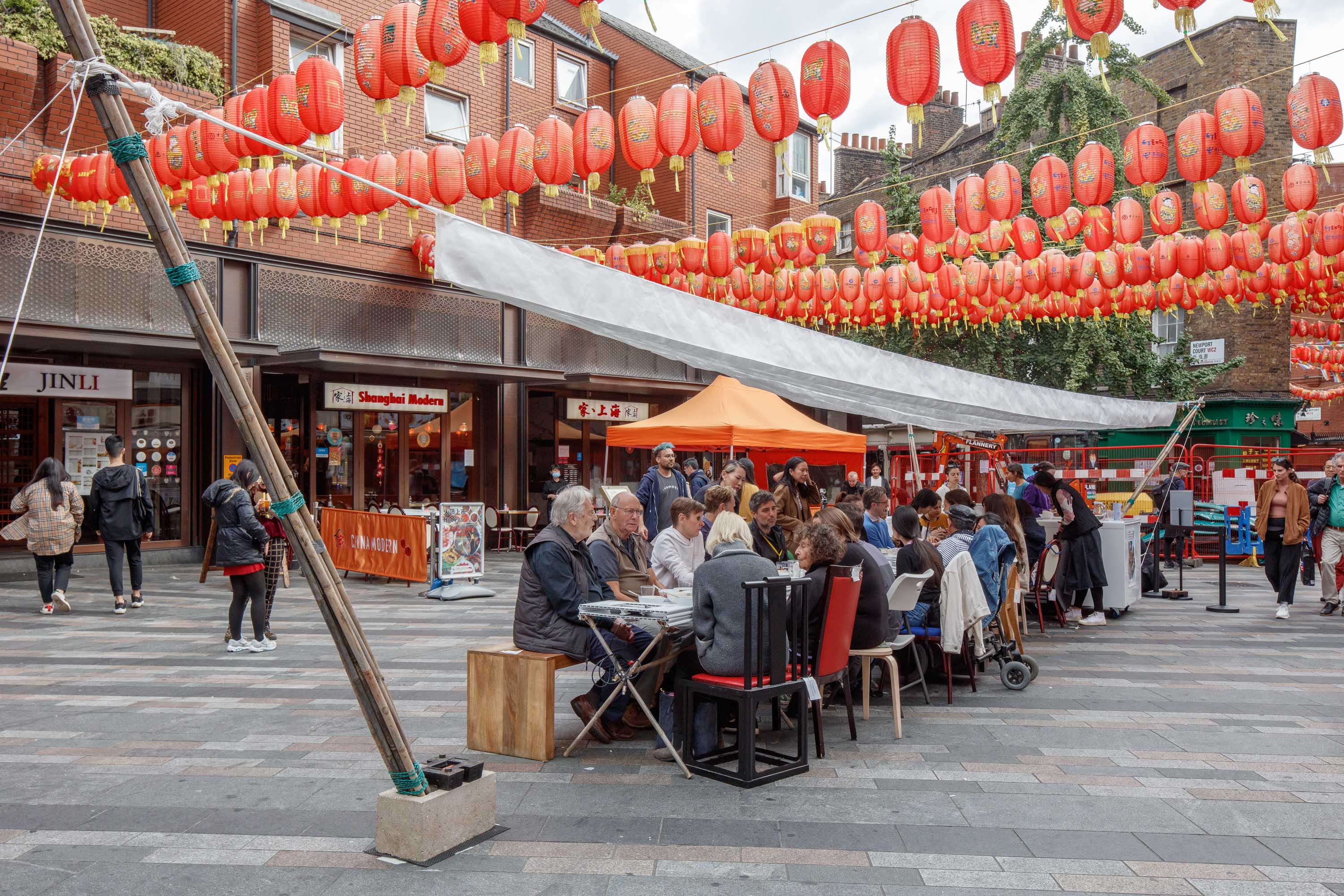
– Photography by Luke O'Donovan –
The Pop-Up Structure is intended to showcase other aspects of tackling the Climate Crisis by adopting low carbon approaches to designing and fabricating sustainable touring works. Designed to be easily assembled/disassembled and transported by a small electric van, the structure is made from a range of materials that are sustainable/low-carbon or easily recyclable in existing facilities once touring ends.
The Structure has four key components: a Preparation Unit, a long Banquet Table, a Pleated Canopy, and borrowed chairs from the Chinatown community. These are made primarily from three materials: These are made primarily from three materials:
• UK grown Bamboo for structural members
• EnviroHoard™ for cladding and surfaces
• Tyvek for sun/rain protection
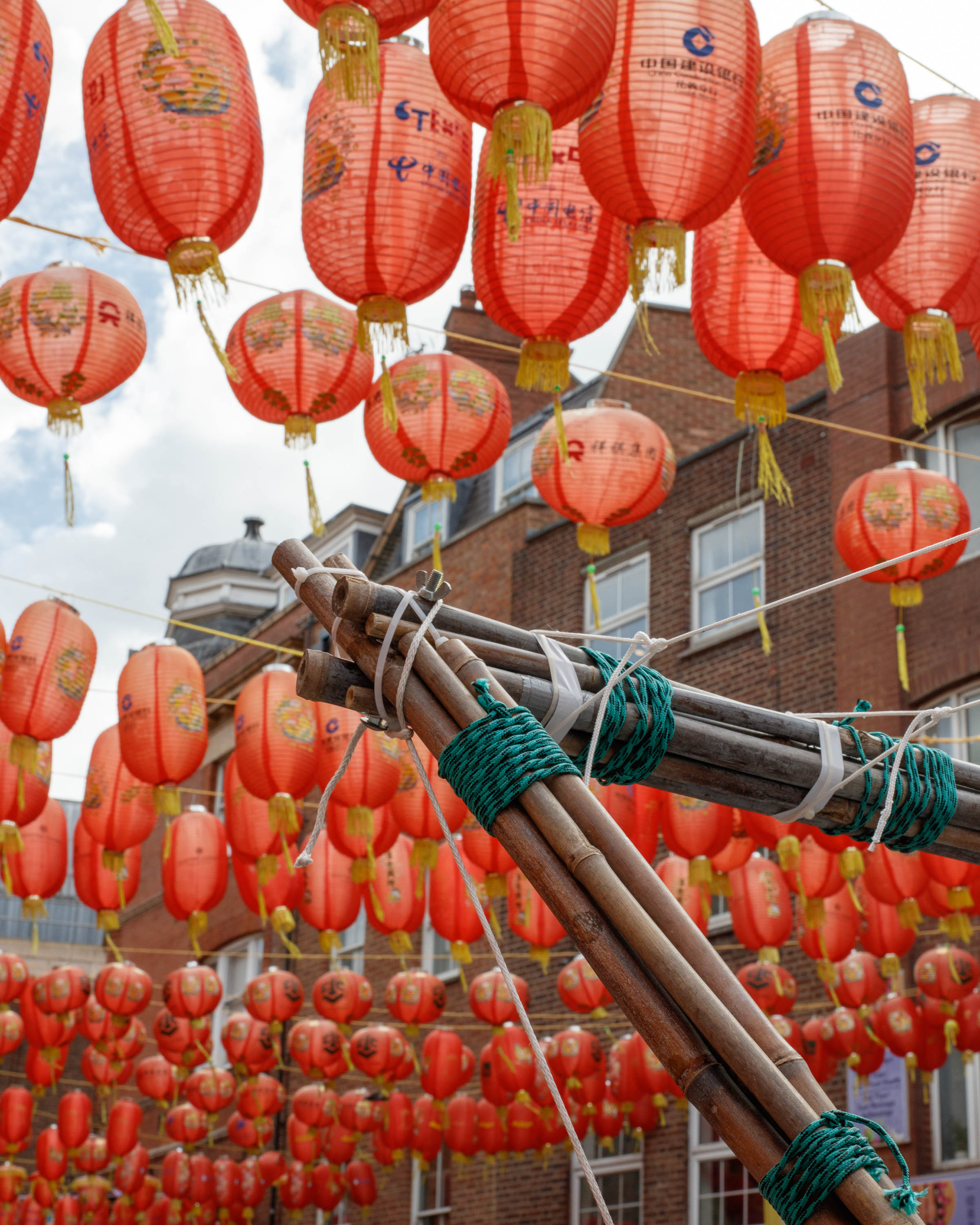
UK Grown Bamboo
The bamboo used in the Pop-Up Structure was grown and harvested from Ness Botanic Gardens in Liverpool (UK).
Borinda bamboo originated from mountainous Tibet and was first propagated in Shropshire (UK) many years ago by one of a few UK bamboo experts, Michael Brisbane. Borinda bamboo is a hardy plant that thrives in different climates. When harvested, it is a strong and sustainable material with many uses in different industries such as construction and design. It has a powerful capacity for capturing carbon, particularly as a result of its growth rate. In contrast to trees, bamboo plants regenerate quickly after being harvested. There is a growing initiative in the UK to explore the use of bamboo as a future sustainable building material for the planet. The bamboo used in the Pop-up was kindly donated by Liverpool City Region.
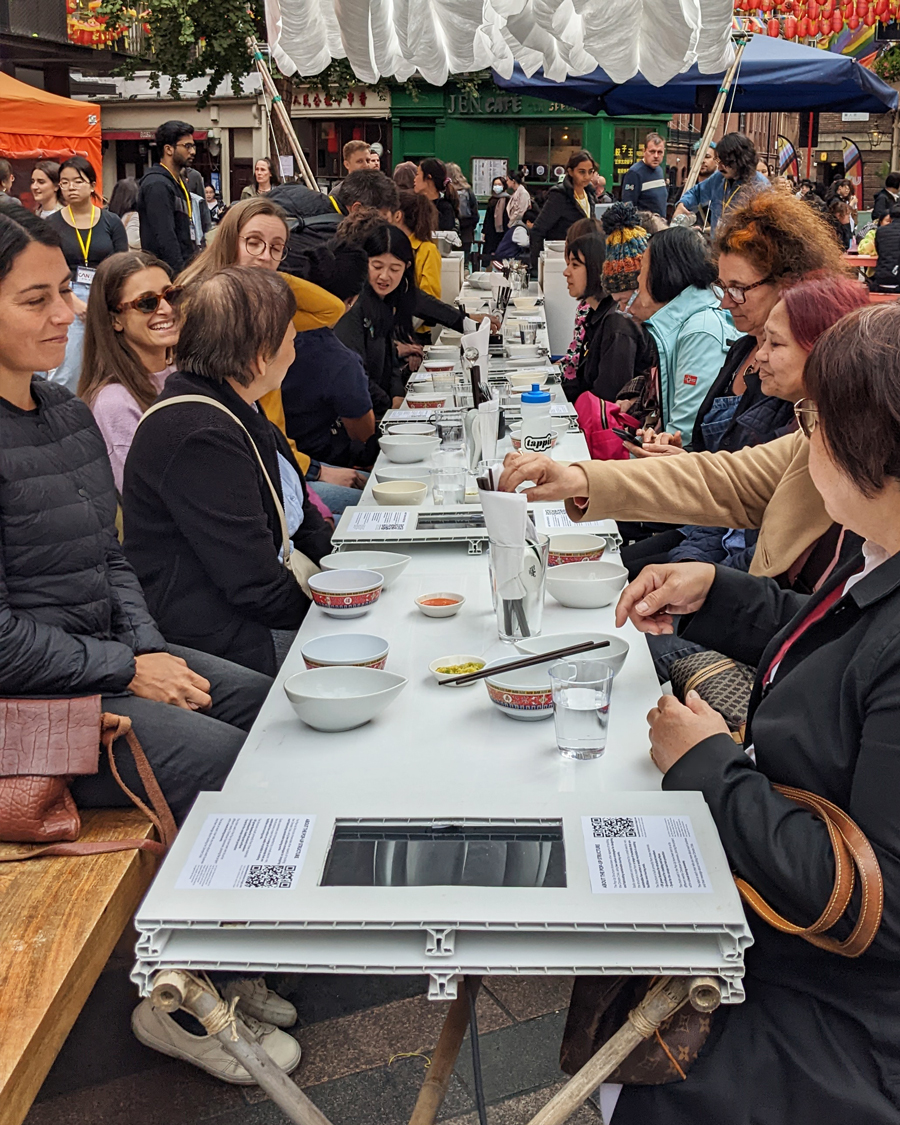
EnviroHoard
The surfaces, counters and cladding of the Pop-Up Structure are fabricated using EnviroHoard™ panels, a recyclable alternative to typical construction hoarding panels.
Developed by UK-based Panthera Group, and normally used in construction sites as hoarding, the panels are made of post-production recycled PVC. In contrast to normal plywood hoarding, they are typically reused up to three times on different sites over several years , and then recycled and processed again to be used as new hoarding panels. Panthera Group has kindly donated Class B pre-used EnviroHoard panels to the project.
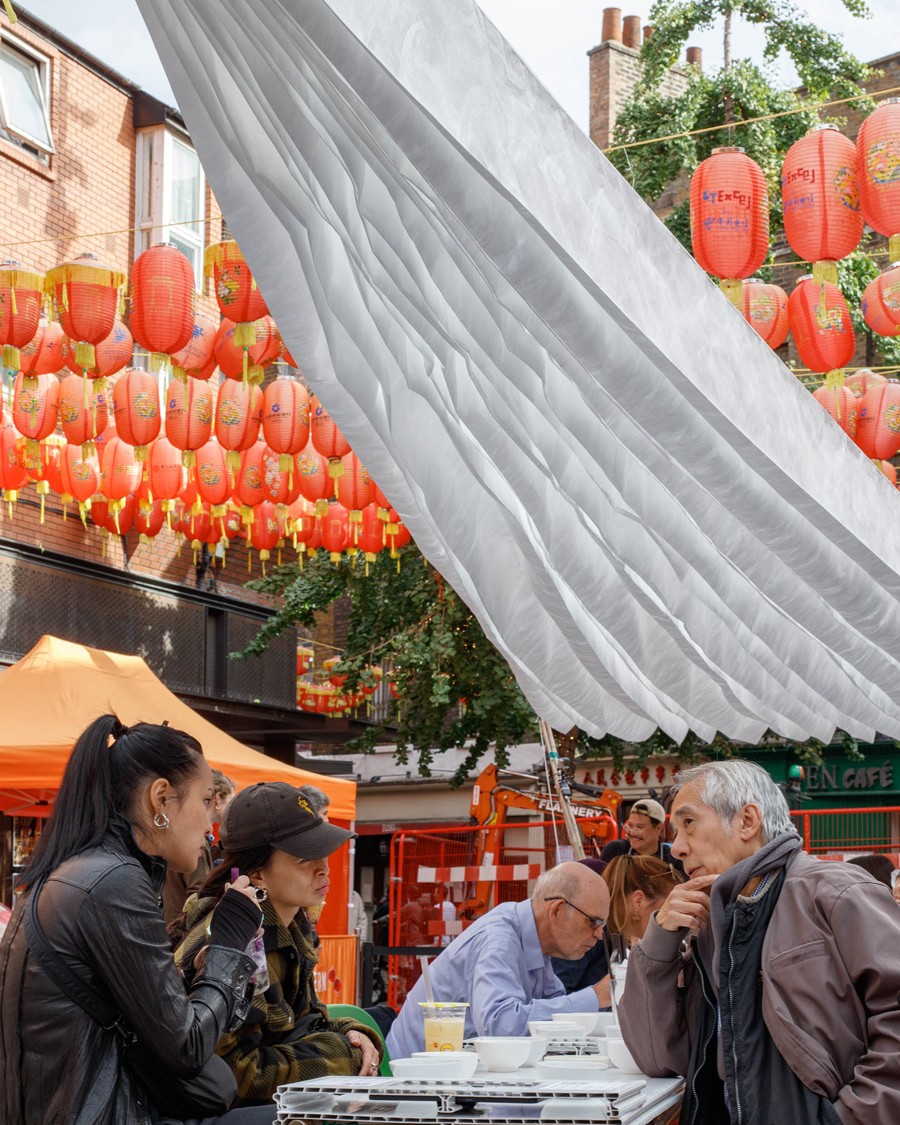
Tyvek
The canopy of the Pop-Up Structure is constructed from pleated Tyvek. While not strictly speaking low-carbon itself, Tyvek is a lightweight paper-like substance that can be easily repurposed and recycled.
It is lightweight, waterproof and a high-value recyclable material, often used in banners and disposable protective wear, which can be mechanically recycled into products such as underground cable protection piping, automotive parts, blown film, packaging cores and trays. Made with 100% HDPE, Tyvek is readily recyclable for its second life in existing recycling facilities. Tyvek from the Pop-up will be repurposed and recycled once it reaches the end of its touring.
Borrowed Chairs From The Chinatown Community

In addition, all the chairs used in the Pop-Up have been lent to us by different nearby Chinatown businesses, placing the project within a local sharing economy – with thanks to Min Tea, Wing Wing, Pot Pot Matatang, Jin Li, New Canton, Ku Bar, Gourmet Kitchen, Shanghai Modern, Candy Cafe, Imperial China, Mi Canteen, Monga, Dumplings' Legend, Leong's Legend, Real Beijing, Shu Xiang Ge, Wan Chai Corner and New China.

Low Carbon Chinatown is a project by Ling Tan and produced by Kakilang. The low carbon Pop-Up Structure is designed by Ling Tan and designer Usman Haque, both trained as architects, supported by structural engineers Atelier One, fabricated by Gary Campbell and production managed by Nick Murray. Special thanks to Data scientist Raphael Leung, Food writers MiMi Aye, Uyen Luu and Shu Han Lee.
